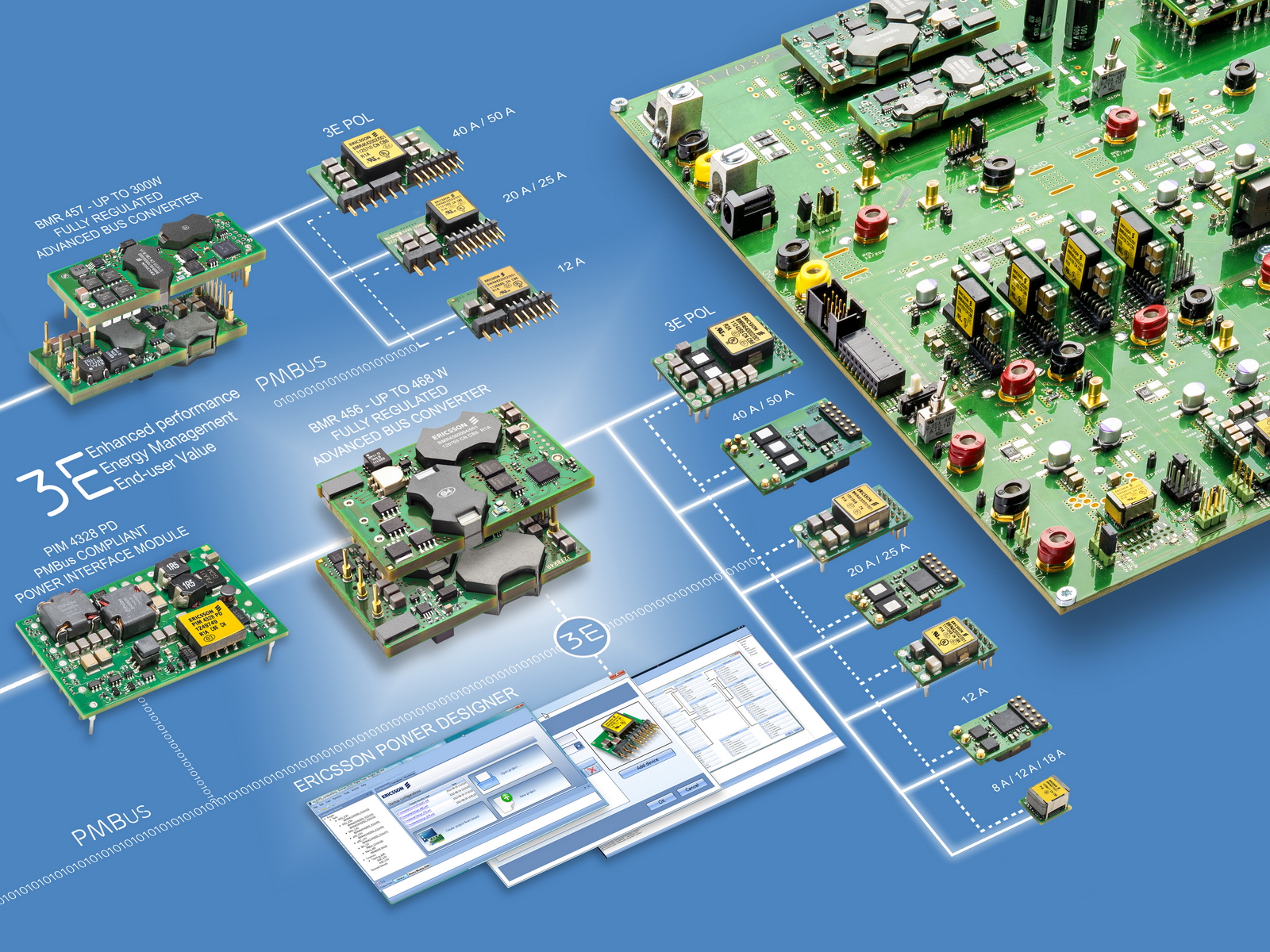Meet increasingly high current & power demands in networking
The world is becoming increasingly more dependent upon ICT. The development of ever faster broadband, high-speed internet services and applications based on cloud computing architectures has meant increased demand for higher-performance networking, data processing and data storage capabilities. By Patrick Le Fèvre, Marketing and Communication Director, Ericsson Power Modules.
This increased traffic requires networking routers and servers to handle huge amounts of data, which in turn require high-performance multicore IP processors, ASICs, FPGAs and other digital processing circuitry. Modern leading-edge processors need highly flexible power solutions that are able to adjust voltage to optimise configuration ranging from 0.6 to 1.8V with excellent response to meet load step transients. In addition, the optimisation of energy is also very important in these advanced processing systems, as more and more it is becoming mandatory to reduce power dissipation and energy consumption.
Software-Defined Power Architecture (SDPA)
Primarily targeting enterprise servers, networking equipment and high-end routers deployed in data centres, but also suitable for a wide range of other applications that have high current demands, the Ericsson BMR465 DC/DC power module enables the powering of applications that require high-efficiency and flexible PoL conversion over the 90 to 360A range. Importantly, the BMR465 power module has also been optimised to power multicore IP processors and is a milestone product in the transition to systems will that implement the SDPA. Power architects are increasingly seeing SDPA as the future for advanced board power management, achieving highly efficient and energy-optimised network architectures by 2020. Software-command controlled by advanced processors, power levels can be adjusted to deliver high power when computing operations are at full capacity, or performance and behaviour is adapted to reduce overall energy consumption when a processor is in standby mode or is only handling limited computational tasks when data traffic is at a low level.
Advanced architectures for power saving
The SPDA works as an overarching scheme implementing advanced techniques for power optimisation and energy saving including the Dynamic Bus Voltage (DBV) and Adaptive Voltage Scaling (AVS). The DBV architecture is an evolution of the intermediate bus architecture and provides the possibility, via advanced DC/DC bus converters, to dynamically adjust the power envelope to meet load conditions. It achieves this by adjusting the intermediate bus voltage used in many datacomms systems and typically around 12 to 14VDC with the use of advanced digital power control and optimised hardware combined with an energy-optimiser series of algorithms.
AVS, another element of the SDPA, is a powerful technique to optimise supply voltages and minimise energy consumption in modern high-performance MPUs. It employs a real-time closed-loop approach to adapt the supply and meet the minimum voltage required for the actual clock frequency and workload of the individual processor. It also adjusts to automatically compensate for process and temperature variations in the processor. Leading-edge high-performance MPUs will change workload and operating conditions within nanoseconds – therefore real-time regulation of the MPU supply puts a high demand on the control-loop bandwidth and requires close monitoring of computing hardware performance in the feedback loop.
PMBus and parallel-ability

Enhanced Performance, Energy Management and End-user Value are the key benefits delivered by Ericsson’s range of 3E digitally controlled DC/DC converters.
A member of Ericsson’s 3E family of digitally controlled DC/DC converters, the BMR465 is a two-phase 90A digital PoL converter that offers compensation-free performance and the ability to easily connect modules in parallel to provide up to 360A to advanced network-processors. The converter can be operated as a standalone unit delivering 90A, as well as being part of a larger power system when processor boards require higher current. Built on a two-phase topology, four BMR465 modules can be connected in parallel together to deliver up to 360A. These modules can become part of a multi-module and multiphase (up to eight-phase) power system that enables phase spreading, a reduction of peak current and also the amount of capacitors required by end systems. The converter is also fully compliant with PMBus commands and has been integrated into the Ericsson DC/DC Digital Power Designer software, which makes it easy for systems architects to simulate and configure complete multi-module and multiphase systems prior to implementation and thereby gain valuable time-to-market.
Designed to deliver cutting-edge performance, the BMR465 integrates ‘compensation-free’ modulation techniques, which automatically provide stability, accurate line and load regulation and good transient performance for a wide range of operating conditions. Operating from a 7.5 to 14V input, the BMR465 can operate over a large range of intermediate bus voltages from 8 to 14V, thereby complying with the DBV scheme implemented in SDPA and reducing power dissipation and saving energy. As part of SDPA, AVS can also be performed via the PMBus, adjusting the BMR465 output voltage to the optimised core voltage as required by the processor.
Furthermore, the converter is also compliant with the new ‘teraAMP’ standard from the Architects of Modern Power (AMP) Consortium, which guarantees customers multiple sources of interoperable products.










